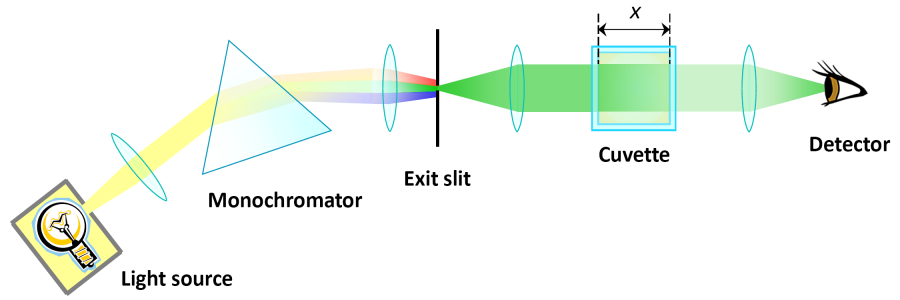4. الامتصاص والتشتت
Absorption photometry (1/6)
On the preceding page Lambert's law, which explains the decline in the intensity of light on its way through an absorbing medium with an absorption coefficient , has been presented like this:
The single beam photometer
In experiments, a glass cuvette of the length is filled with a sample and lighted. At the entrance of the cuvette (at ) the intensity equals . The by absorption lowered intensity is measured at the end of the cuvette.
The light from the source is divided into its spectral parts with a monochromator. The schematic drawing shows a prism monochromator, in most cases gratings would be used for the spectral decomposition of light. Monochromatic light with a selectable wavelength leaves the exit slit. A converging lens generates a nearly parallel light beam which passes the cuvette. The remaining light is focussed by another converging lens onto a photodetector where it will be converted into an electric signal which is proportional to the intensity. This signal may be further electronically processed.
It is aim of the interpretation to calculate or the decadic extinction coefficient from the values and for the different wavelengths and considering the known length of the cuvette. Spectrophotometers for laboratories would calculate the extinction , for which the cuvette length is not needed.
If you have processed the task, you are well prepared for experimenting. You can find the instructions on two experimentation sheets:
- a photometer setup for measurement of absorption at some wavelengths, with more details and hints on experimental errors on additional pages
- experiments with a commercially available absorption photometer for science class in school.

